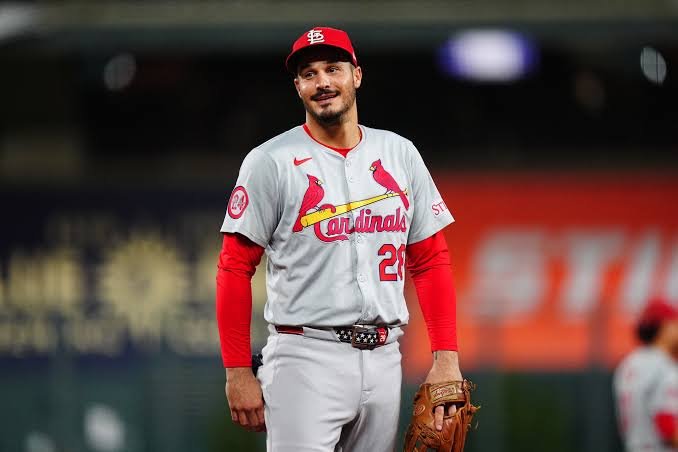Once a cornerstone acquisition and fan favorite, Nolan Arenado has now become an immovable piece in a crumbling puzzle for the St. Louis Cardinals. With declining production, an unshakable contract, and a full no-trade clause, Arenado isn’t going anywhere—whether the Cardinals like it or not.
Coming off a disappointing 2024 season, the Cardinals entered 2025 with cautious optimism. But that hope has evaporated quickly, and Arenado’s regression at the plate has only added fuel to the fire. The 33-year-old third baseman is slashing a career-low .244/.302/.386, and his once-elite defensive metrics have shown signs of slippage.
The front office explored potential trade options in the offseason and again this summer, reportedly engaging with contenders like the Astros and Dodgers. But multiple deals fell through—not because of lack of interest, but because Arenado exercised his full no-trade rights. He’s not budging, and that puts the organization in a difficult bind.
Financially, Arenado is owed $32 million in 2025, $27 million in 2026, and $15 million in 2027. While some of that is still subsidized by the Rockies as part of the original trade, the Cardinals remain heavily committed. That kind of money for a declining asset is straining payroll flexibility and limiting roster decisions.
Publicly, the front office has stayed quiet. But insiders suggest frustration is mounting behind the scenes. The team appears unwilling to bench or demote Arenado, due to both his stature and the optics of sidelining a star. But keeping him entrenched in the lineup arguably holds the team back from fully embracing a youth movement.
What’s worse is the opportunity cost. With third base locked up by Arenado, top prospects like Thomas Saggese and even Masyn Winn (who could shift infield roles) are blocked. A rebuild or retooling effort becomes increasingly complicated when nearly $100 million is tied up in a single, underperforming veteran.
Fans are deeply divided. Some remain loyal, pointing to Arenado’s past production, leadership, and passion for the game. Others argue the Cardinals are stuck in neutral and need to make bold, even painful, moves—starting with offloading aging stars regardless of sentiment.
This crossroads could not come at a worse time. With the team floundering in the NL Central and injuries piling up, the Cardinals face a near-impossible deadline decision: stand pat and pray for a turnaround, or attempt a half-hearted sell-off while big contracts handcuff their options.
For Arenado, the desire to stay in St. Louis may be admirable, but it leaves little room for the franchise to pivot. Unlike Paul Goldschmidt—another aging vet on an expiring deal—Arenado holds the leverage and the years. Any rebuild that includes him is, by definition, limited.
Arenado’s no-trade clause, once seen as a mutual commitment between player and team, now feels like a strategic stalemate. The Cardinals can’t trade him, can’t cut him, and can’t reassign him without controversy. It’s a franchise-in-limbo situation, and it’s getting worse with each underwhelming stat line.
In a sport where flexibility is currency, the Cardinals have lost theirs. Unless Arenado rebounds dramatically or agrees to a trade, he remains an expensive symbol of a team stuck between past glory and uncertain future. And unless the front office finds a bold solution, the Cardinals’ corner will only grow tighter.
For now, the reality is clear: Nolan Arenado is staying. And so is the problem.
